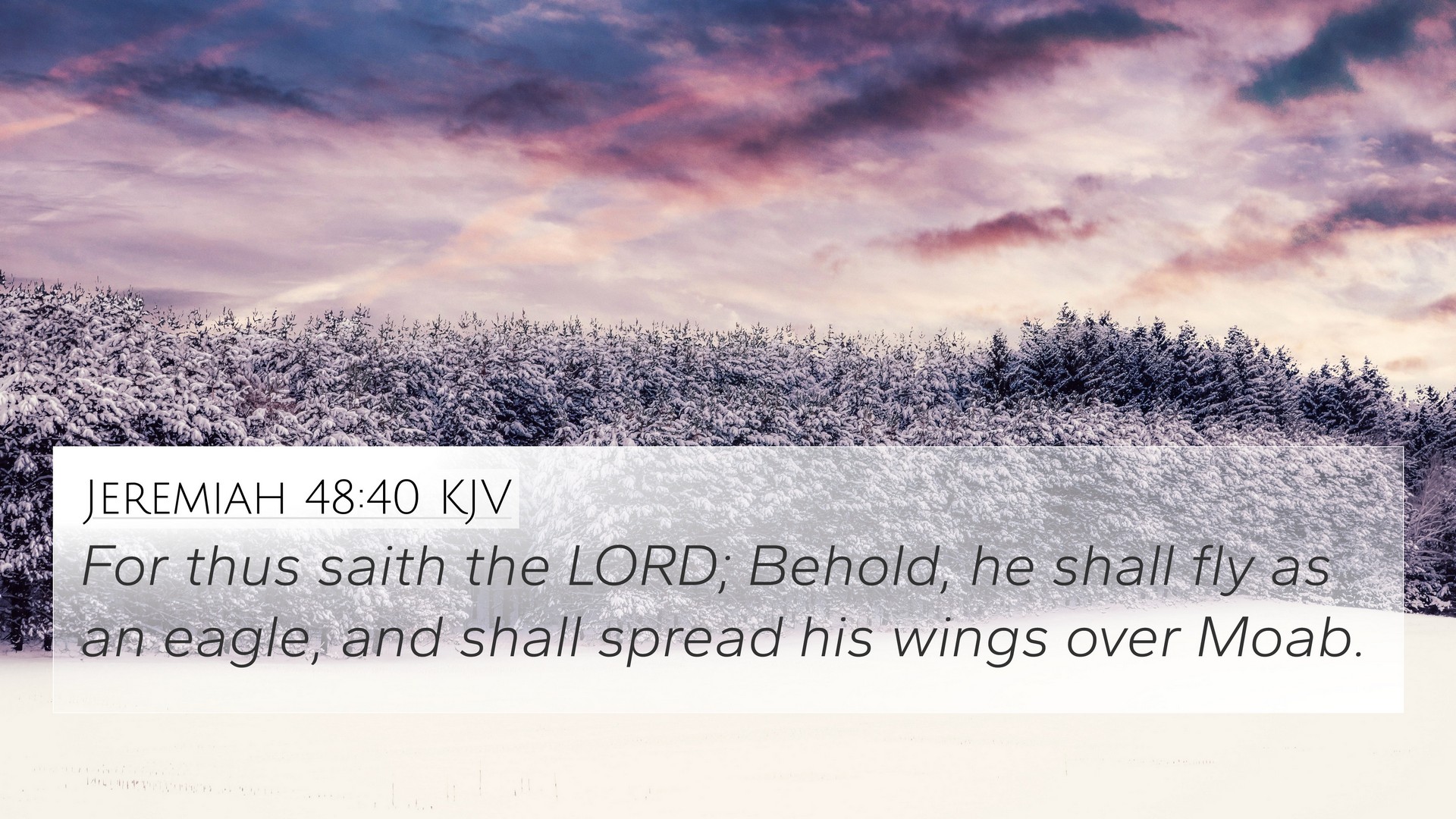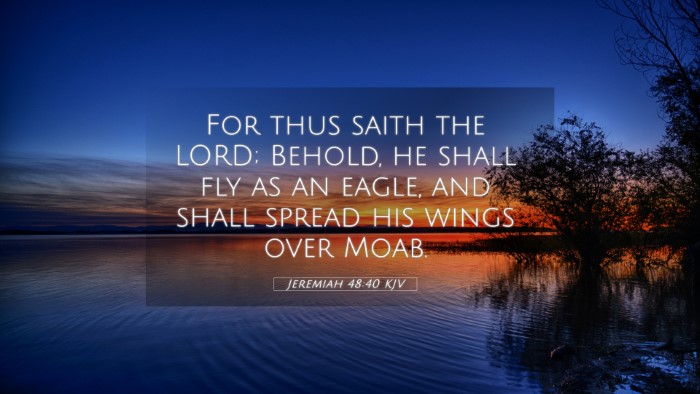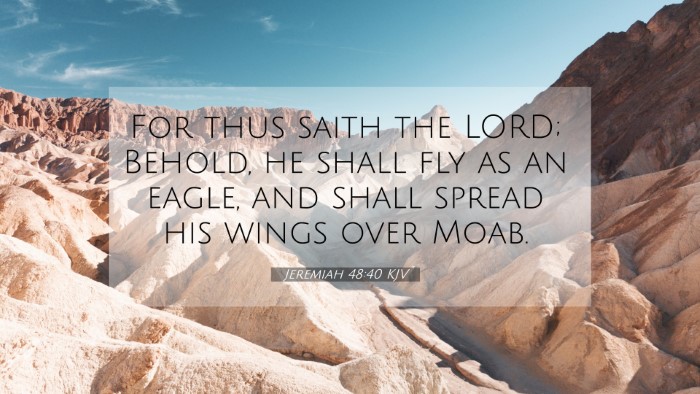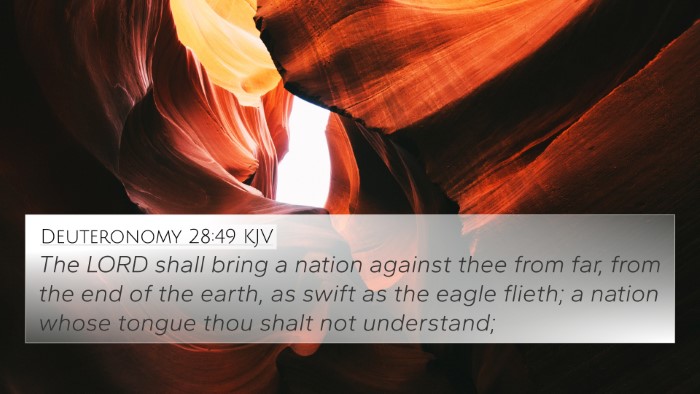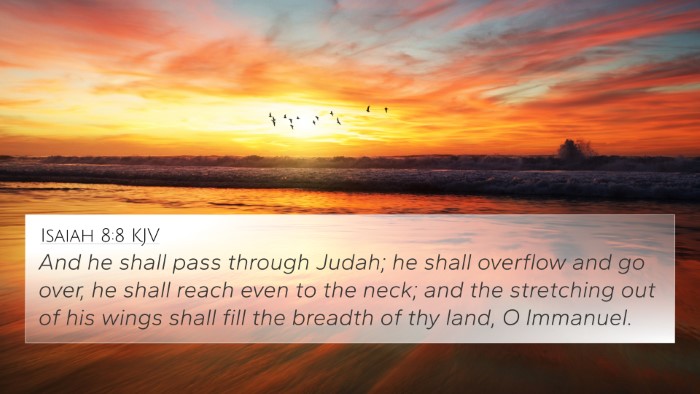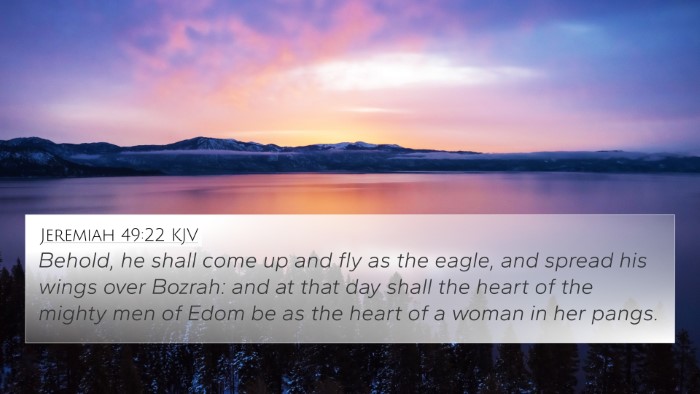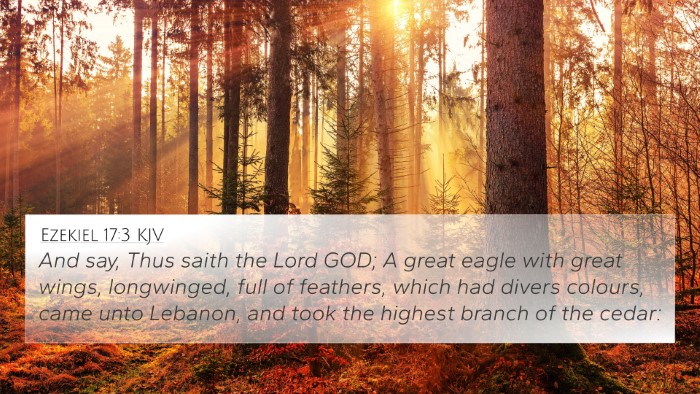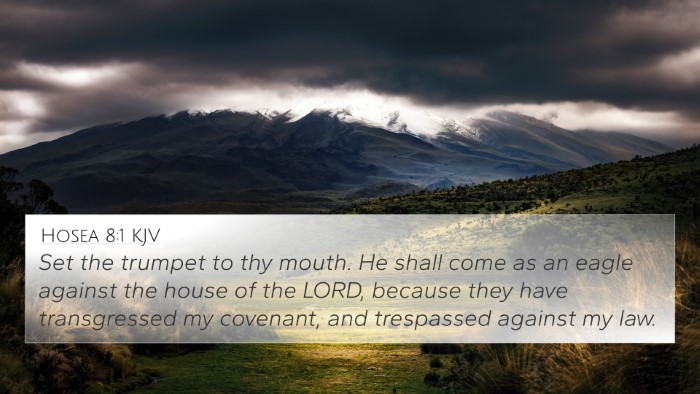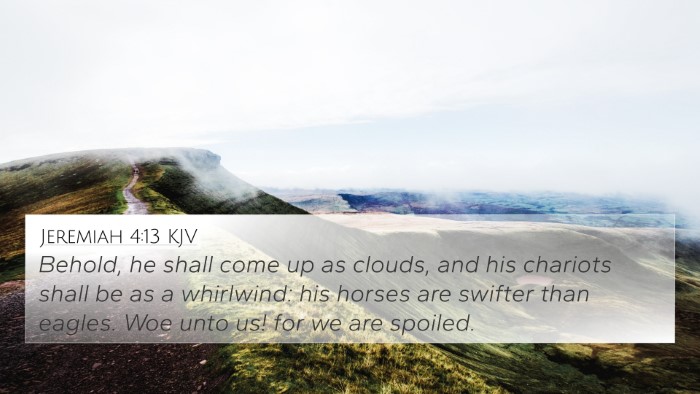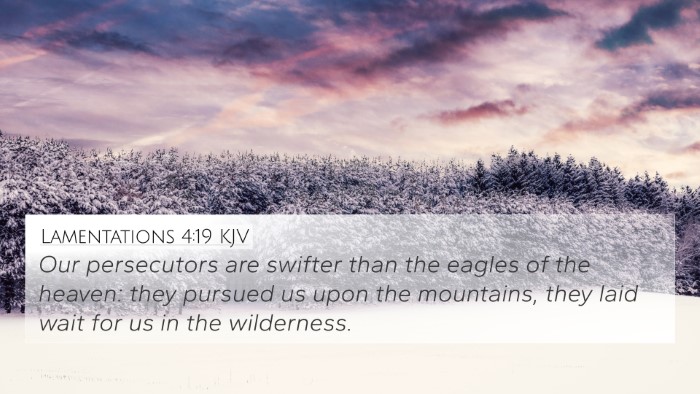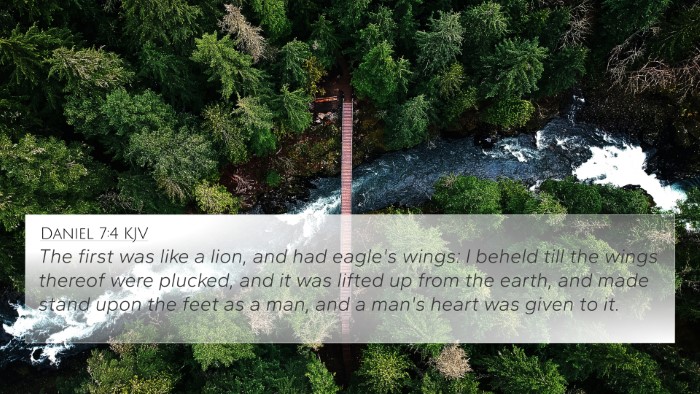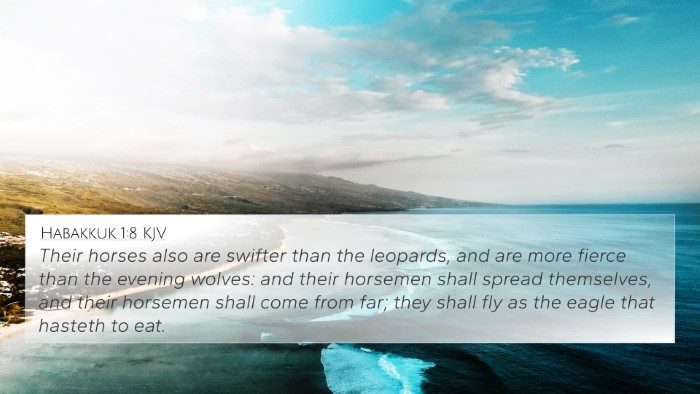Understanding Jeremiah 48:40
Verse: "For thus saith the Lord; Behold, he shall fly as an eagle, and shall spread his wings over Moab."
Summary of Meaning
This verse from Jeremiah speaks to the judgment that God will execute upon Moab, symbolized as an eagle swooping down to catch its prey. The imagery conveys both power and swiftness of God's judgment, indicating that divine actions cannot be evaded. Moab, often seen as a type of opposition, faces inevitable destruction as predicated by the Lord.
Insights from Public Domain Commentaries
Matthew Henry
Matthew Henry emphasizes the certainty of God's decree against Moab. He interprets the flight of the eagle as a representation of God's authority and the inevitability of judgment. The aggressive imagery underscores the futility of resisting divine will, highlighting Moab's impending defeat as pronounced by the sovereign God.
Albert Barnes
Albert Barnes offers insight on the metaphor of the eagle, drawing attention to its swiftness and strength. He explains that the eagle's flight symbolizes the rapid and overwhelming nature of God’s judgment. Barnes notes that this verse serves as a reminder of God's justice and the quickness with which He can bring about retribution for sin and rebellion.
Adam Clarke
Adam Clarke provides a historical context, noting that this prophecy serves as a warning to Moab about the consequences of its moral decay and spiritual pride. He interprets the eagle's wings as signifying divine protection for God's people while pronouncing calamity upon their adversaries. Clarke underscores the theme of reliance on God as the ultimate security against impending threats.
Cross References
- Deuteronomy 28:49: "The Lord will bring a nation against you from afar..." - Prophetic judgment on disobedient nations.
- Isaiah 40:31: "But they that wait upon the Lord shall renew their strength; they shall mount up with wings as eagles..." - God's protection and strength for His people.
- Lamentations 3:19-26: "Remembering mine affliction and my misery, the wormwood and the gall..." - The hope for God's mercies amidst judgment.
- Jeremiah 49:22: "Behold, he shall come up and fly as the eagle..." - A parallel instance of God's judgment represented through the eagle motif.
- Ezekiel 17:3-7: "And say, Thus saith the Lord God; A great eagle with great wings..." - Further elaboration on eagle symbolism in judgment scenarios.
- Habakkuk 1:8: "Their horses also are swifter than the leopards..." - Comparison of the swiftness of God's agents in carrying out judgment.
- Revelation 4:7: "And the first beast was like a lion, and the second beast like a calf, and the third beast had a face as a man; and the fourth beast was like a flying eagle." - Symbolism of creatures representing God’s authority and judgment.
Bible Themes and Connections
The themes presented in Jeremiah 48:40 resonate with various biblical motifs, such as the swift nature of divine retribution, the significance of flight as an omen of judgment, and the broader narrative of God's sovereignty over nations. The commitments of God to His people as highlighted in contrasting aspects of judgment also connect with the overarching storyline found in both the Old and New Testaments.
Thematic Bible Verse Connections
In exploring the connections between Jeremiah 48:40 and other scriptures, it can be noted how God communicates consistent themes of judgment and deliverance throughout the Bible.
Identifying Connections
- The theme of divine retribution compares the destruction of Moab to other nations judged throughout scriptures.
- Ultimately, the revealing of God’s character as a defender of Israel correlates to New Testament teachings about God’s justice.
- The motifs of wings and flight can be seen throughout the biblical narrative, signifying both protection and judgment across different contexts.
Conclusion
This exploration of Jeremiah 48:40 reveals profound insights into divine judgment articulated through powerful metaphors. By cross-referencing with other scriptures, we gain a holistic understanding of God's decrees in the face of disobedience, reaffirming the significance of maintaining faith and trust in God's plans amidst societal turmoil.
